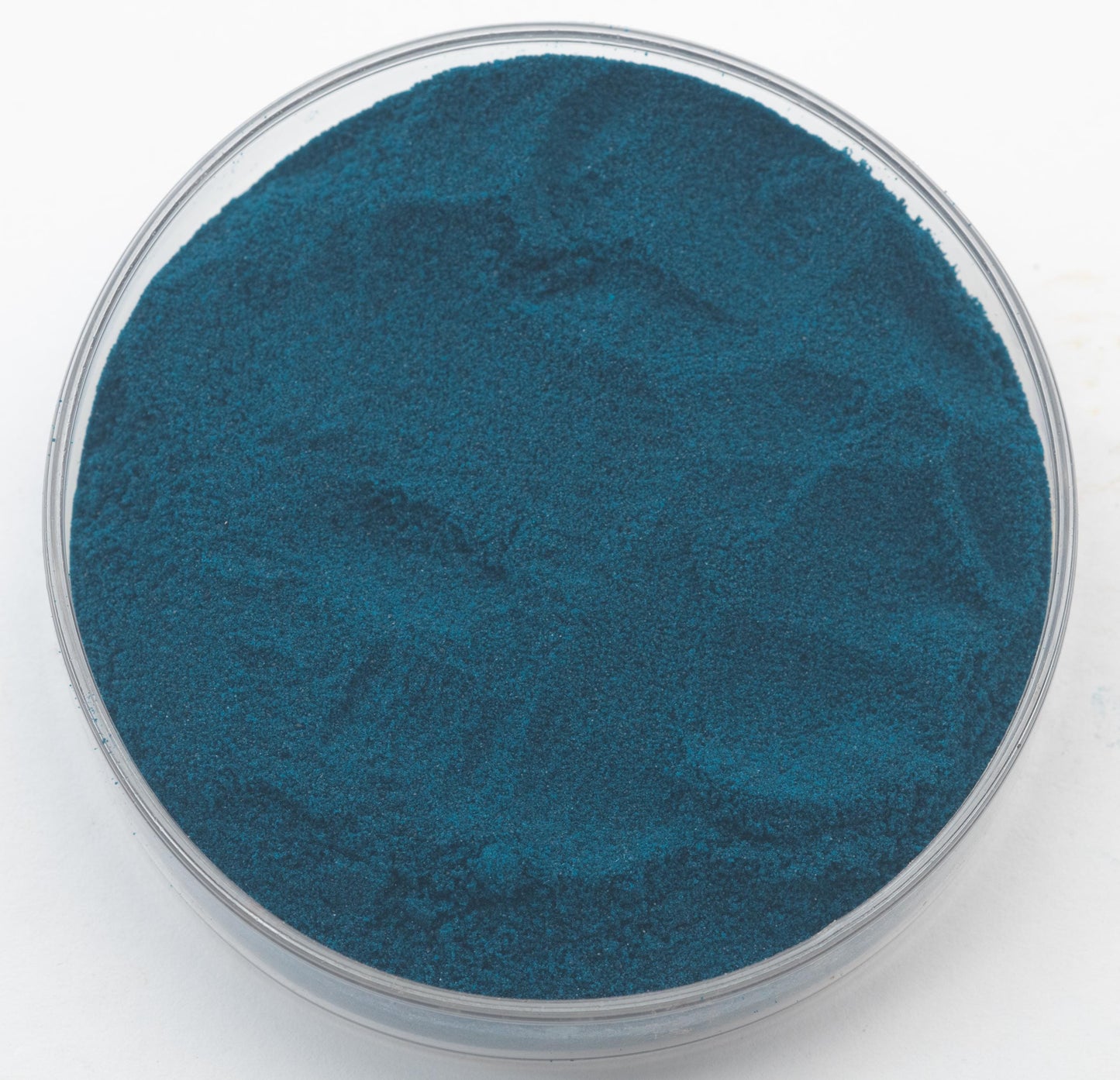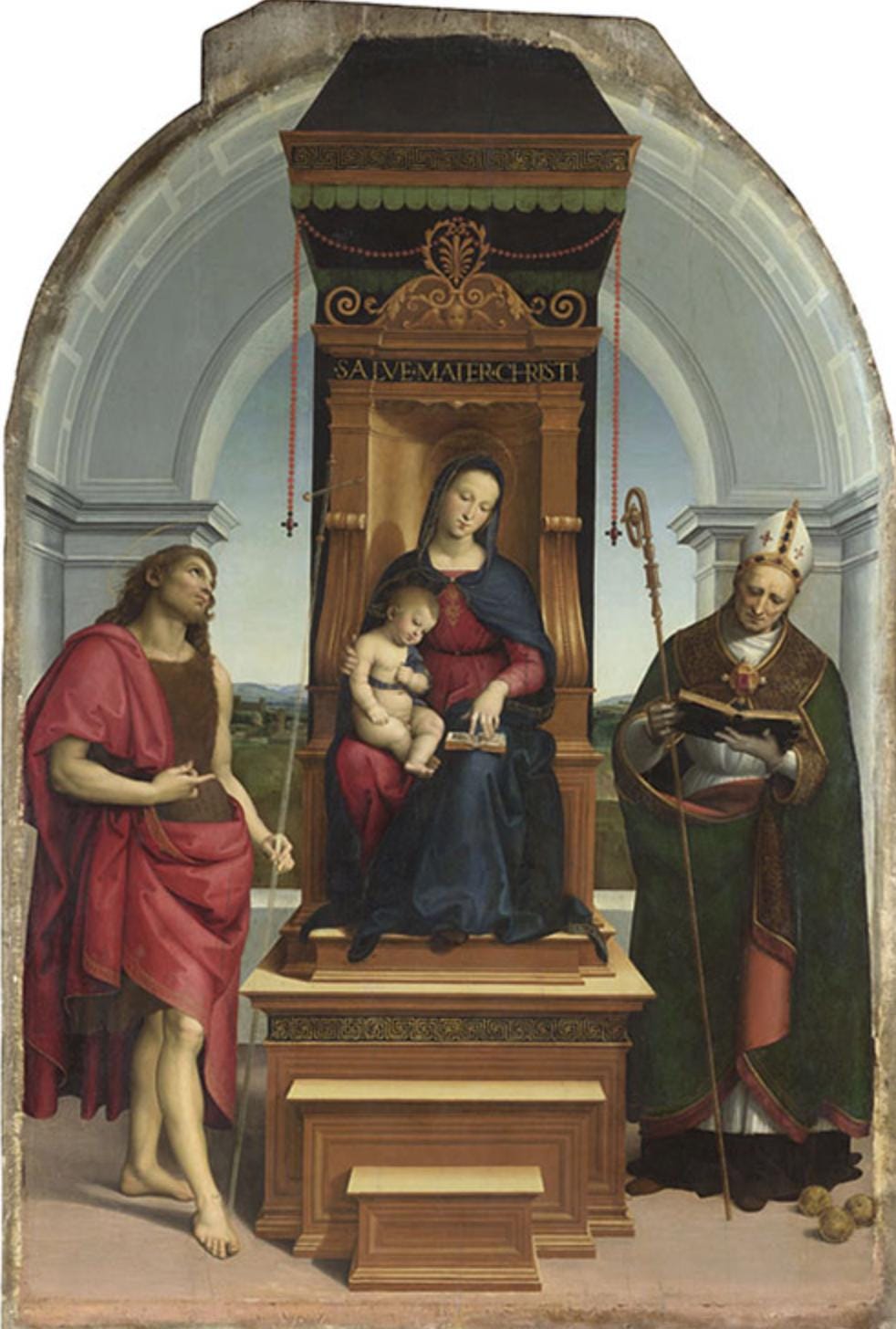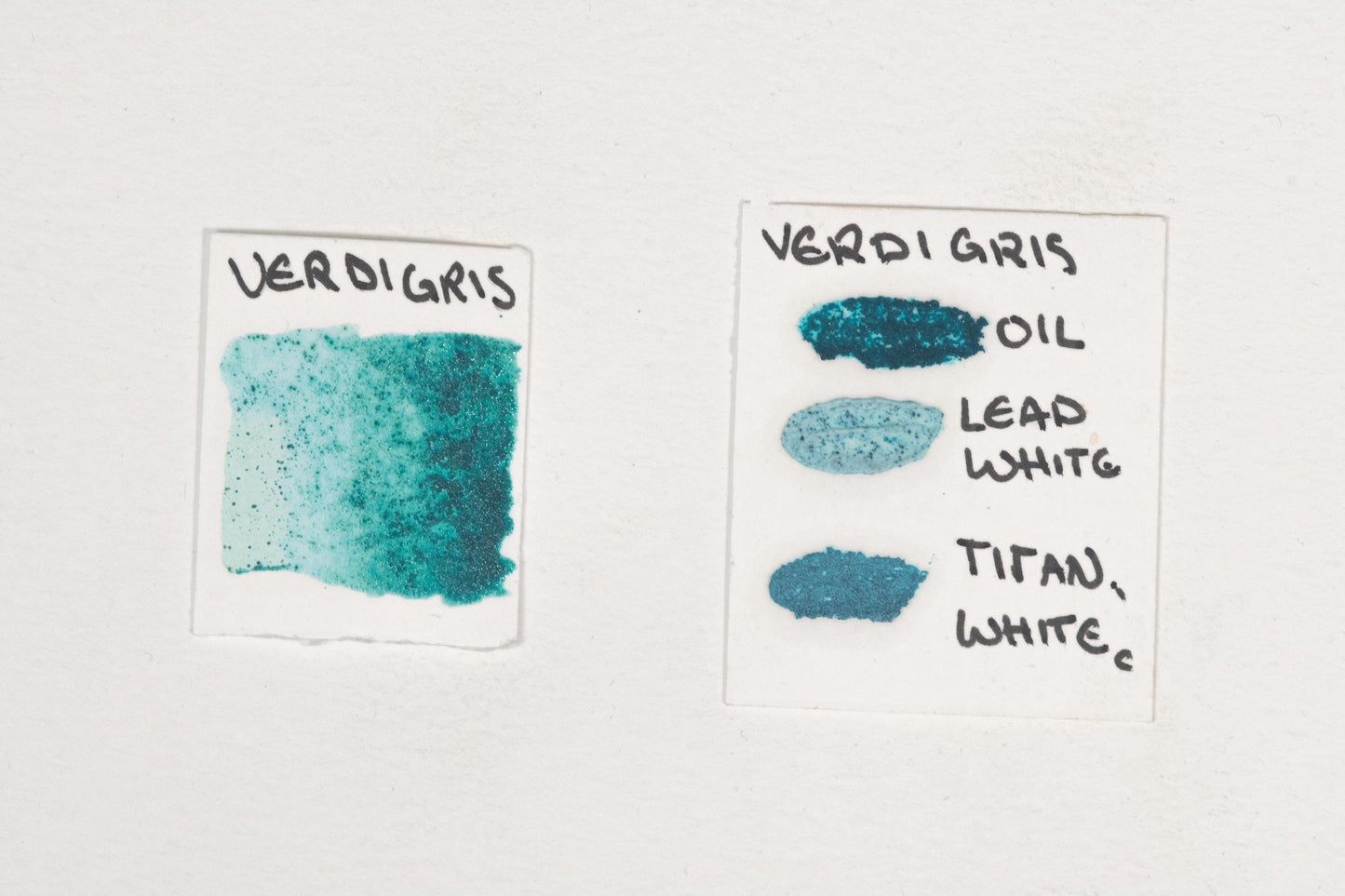Verdigris Coarse
Verdigris Coarse
Couldn't load pickup availability
Share



Description
Verdigris is a handmade single pigment made through a historical process of exposing copper to acetic acid, resulting in a brilliant bluish-green patina. This pigment, chemically known as copper acetate, has been highly prized for its vivid, translucent color and strong tinting properties. However, it is known to be chemically unstable, prone to darkening over time when exposed to air and moisture. Our Coarse Verdigris is left large for a beautiful speckled look when used in watercolor or as an oil glaze.
Verdigris has moderate lightfastness, making it suitable for classical and historical artwork where its brilliant hue can be preserved with proper varnishing and protective techniques. It blends seamlessly with other pigments, offering intense, jewel-like greens and blues in painting. Its high translucence allows for exquisite glazing and layering effects in oil, watercolor, and tempera applications. Compared to natural greens such as Malachite, Verdigris provides a more vibrant and cool-toned hue, though it requires careful handling to maintain its brightness over time.
History
Verdigris has been used as a pigment for over two thousand years, admired for its intense greenish-blue hue and unique patina effect.
During antiquity, the Greeks and Romans produced Verdigris by suspending copper plates over vinegar vapors, allowing the reaction to create a rich green coating. It was widely used in frescoes, decorative arts, and early manuscripts, though its tendency to darken was noted even then.
In the Middle Ages and Renaissance, Verdigris became a dominant green pigment in European painting, frequently used in illuminated manuscripts, religious iconography, and oil painting. Artists such as Jan van Eyck and Leonardo da Vinci employed Verdigris for its brilliant glazing effects, particularly in drapery and foliage. However, it was notorious for its tendency to react with other pigments, sometimes causing irreversible discoloration. In the pictured artwork 'The Ansidei Madonna' by Raphael, Verdigris is used throughout the background, cloth elements, and as a glaze for the various greens and green yellows of the painting in combination with various yellows such as Lead-Tin Yellow.
By the 18th and 19th centuries, Verdigris was gradually replaced by more stable synthetic greens, such as Viridian and Chrome Green, which offered similar brilliance without the risk of degradation. However, it continued to be used in traditional restoration work and historical pigment reconstructions.
Today, Verdigris remains a valued pigment for conservators, icon painters, and historical artists who appreciate its luminous beauty and historical significance. Modern varnishes and preservation techniques help mitigate its instability, allowing its brilliant color to endure.
Health and Safety
Precautions:
Keep out of reach of children and pets.
Do not consume.
Not for cosmetic or food usage.
Do not spray apply.
For further health information contact a poison control center.
Use care when handling dry pigments and avoid dust formation.
Use particular caution with fibrous, fine, or toxic pigments.
Do not eat, drink, or smoke near dry pigments.
Avoid breathing in pigment dust and use a NIOSH-certified dust respirator with sufficient rating for dry pigment.
Wash hands immediately after use or handling.
If dust is likely, always wear protective clothing to keep out of eyes, lungs, off skin, and out of any contact as well as keep area ventilated.
This product contains copper and is toxic if ingested or inhaled in large quantities.
This product may contain chemicals known by the State of California to cause cancer, birth defects, or reproductive harm.
Warnings and bottle information are abbreviated.
Pigment Information
Pigment Type: Synthetic (Copper Acetate) from minerals (Cu(CH₃COO)₂·H₂O)
Suitable Mediums: Watercolor, Oil, Tempera, Acrylic
Lightfastness: Acceptable (prone to darkening over time)
Opacity: High translucence
Other Names: Copper Acetate, Spanish Green, Aerugo, Acetate of Copper
Color Index Code: PG20
Image: 'The Ansidei Madonna' by Raphael from the National Gallery



